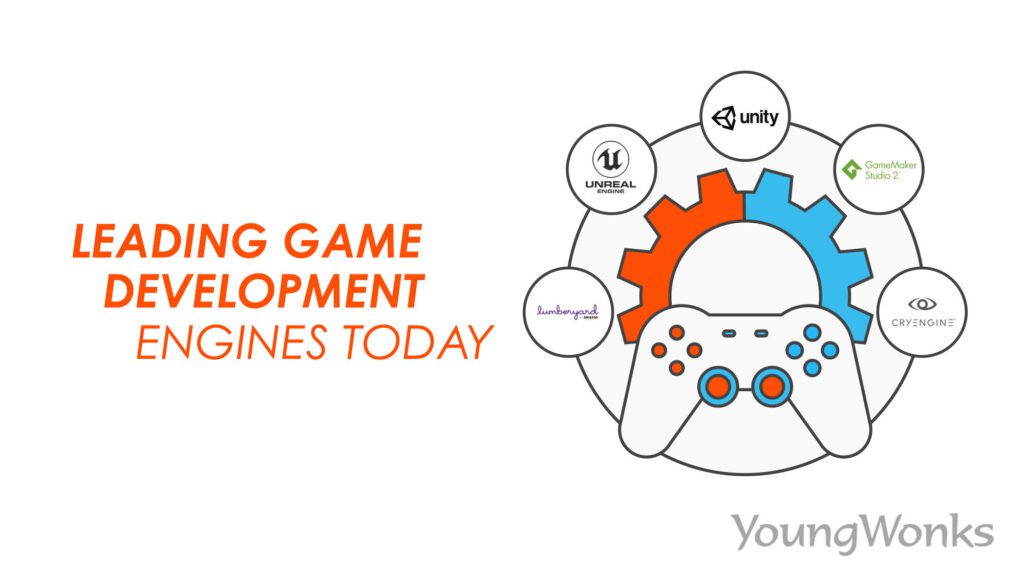This article explores the evolution of three popular game engines: Unreal Engine, Unity, and GameMaker. Unreal Engine was launched in 1998 and has since undergone significant updates to offer features like dynamic lighting, physics simulation, and a visual scripting language. Unity was released in 2005 and is designed to be cross-platform, with its latest version supporting Physically Based Shading, a new audio mixing system, and WebGL. GameMaker was created in 1999 and aimed to be accessible for non-programmers, while its latest version, GameMaker Studio 2, introduced a new visual scripting language, an audio engine, and improved rendering support.
The Evolution of Game Engines: A Look at Unreal Engine, Unity, and GameMaker Over Time
Game engines are a vital component in the creation of modern video games. They provide developers with a powerful set of tools that allow them to bring their ideas to life quickly and efficiently. Over the years, game engines have evolved significantly, with each new iteration providing better performance, more features, and greater flexibility. In this article, we’ll take a look at some of the most popular game engines and how they have changed over time.
Unreal Engine
Unreal Engine is one of the most popular game engines on the market today, and it has been around for over two decades. The engine was created by Epic Games, and the first version was released in 1998. The original version of Unreal Engine was a groundbreaking piece of software that provided developers with an unprecedented level of control over their games.
Over the years, Unreal Engine has seen significant updates, with each new release bringing in new features and improvements. In 2005, Unreal Engine 3 was released, which introduced modern features like dynamic lighting, physics simulation, and advanced shaders. This version of the engine powered some of the most popular games of the time, including Gears of War and Bioshock.
In 2014, Epic Games released Unreal Engine 4, which was a complete overhaul of the engine. This version of the engine included a number of new features, including a new visual scripting language, better physics simulation, and improved rendering capabilities. One of the most significant changes was the adoption of a subscription-based model, which made the engine more accessible to indie developers and smaller studios.
Unity
Unity is another popular game engine that has seen significant growth in recent years. The engine was first released in 2005, and it quickly gained popularity among indie developers due to its ease of use and accessibility. Unlike other game engines at the time, Unity was designed to be cross-platform, which meant that developers could create games for multiple platforms, including iOS, Android, and consoles.
Over the years, Unity has undergone significant updates, with each new release introducing new features and improvements. In 2012, Unity 4 was released, which introduced support for DirectX 11 and improved support for Windows and Linux. This version of the engine also introduced a new animation system and improved physics simulation.
Unity 5 was released in 2015, and it included a number of significant changes. The engine was updated to support Physically Based Shading, which allowed for more realistic lighting and materials. The engine also introduced a new audio mixing system and support for WebGL, which allowed developers to create games that could be played in a web browser.
GameMaker
GameMaker is a game engine that has been around for over two decades. The engine was created by YoYo Games, and it was first released in 1999. GameMaker was designed to be a simple and accessible game engine that could be used by anyone, regardless of their programming skills.
Over the years, GameMaker has seen significant updates, with each new release bringing in new features and improvements. In 2012, GameMaker: Studio was released, which was a complete overhaul of the engine. This version of the engine introduced a new cross-platform development environment, which allowed developers to create games for multiple platforms, including iOS, Android, and consoles.
In 2017, YoYo Games released GameMaker Studio 2, which was a significant update to the engine. This version of the engine introduced a new visual scripting language, which made it even easier for non-programmers to create games. GameMaker Studio 2 also introduced a new audio engine and improved support for modern rendering techniques like shaders and post-processing.
Conclusion
Game engines have come a long way since the early days of video games. With each new iteration, game engines have become more powerful, more flexible, and easier to use. Today, there are dozens of game engines available, each with its own unique set of features and capabilities. Whether you’re an indie developer or a large studio, there’s a game engine out there that’s perfect for your needs.
